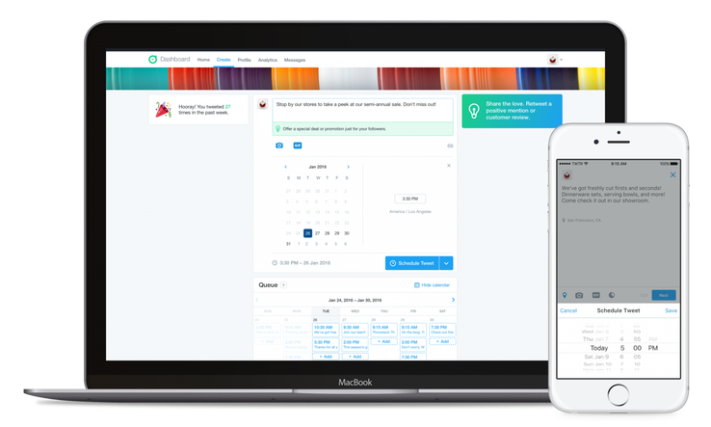Twitter has announced Dashboard, a new site and mobile app designed for brand and corporate account management. The new tool offers publishing teams a few features that have been common to third party CMS platforms for a while but which are new to the native system. Those include Tweet scheduling, editing of scheduled Tweets (before they’re live) and enhanced monitoring to make sure you don’t miss conversations about your brand.

As I said, most all of this is standard in the feature-set of Spredfast and other CMS offerings, so any program manager who’s operating at a certain level is completely used to what’s being made available here. So why is Twitter offering a native version of tools that most serious content marketing pros have been using for years?
I think the answer lies in that term I used: “…at a certain level.” If you’re managing a social media content program for a major brand or company, you *need* the kind of features that come with the tools that cost thousands of dollars a year. They offer those and other features that make doing your job so much easier, including reporting and more. But that’s not the direction social media is going in.
Instead it seems to be the case that the other tier of people who are managing social content programs are young people who grew up with tech, yes, but aren’t doing strategy in their jobs. They’re used to managing apps natively because that’s the only way you can do Snapchat, Instagram and Pinterest. They’re used to running Facebook’s native app, not using another tool to publish. They don’t *need* the kind of enhanced tools, including reporting, that come with the serious enterprise offerings.
For them, Twitter’s new native Dashboard will be fine because that’s better than what they’re using now but doesn’t weigh them down with all kinds of bells and whistles that are geared more for their bosses than for their needs. So Dashboard will be attractive to this group and maybe take a few users away from those enterprise-level platforms in cases where budgets are being scrutinized. Free will trump feature-sets in many cases.
Dashboard is cool and it’s better than what Twitter offered previously, which was nothing for anyone who wasn’t a paid advertiser. It’s going to be good enough for many, which is the point. More importantly, all of that happens within the Twitter ecosystem, allowing the company to at least potentially capture the data of how it’s being shared, by whom and in what manner. That could be invaluable when it comes to continuing to make the pitch to investors and they advertisers always being chased.
